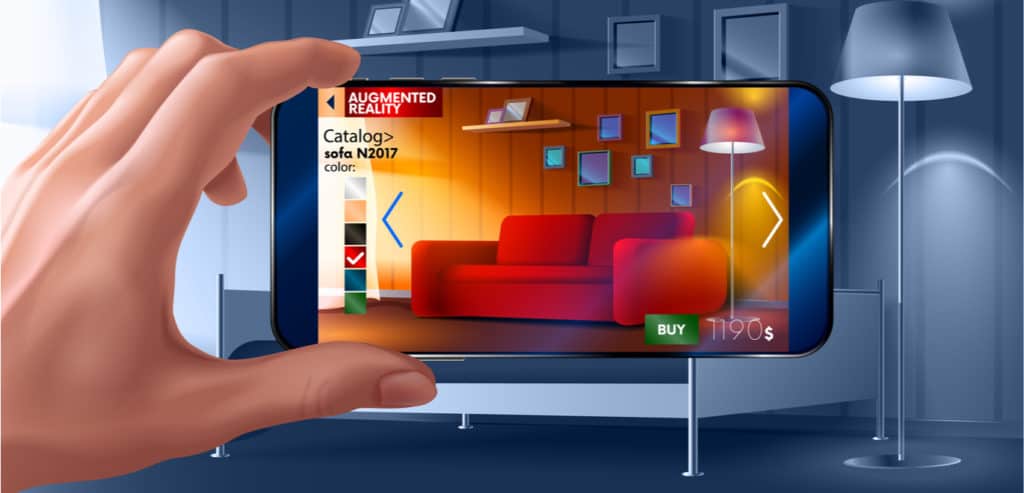
Ben Houston, founder, ThreeKit
Since the introduction of ecommerce, online retailers have relied on static two-dimensional photos to sell their products. That was standard practice for a few reasons. At first, online retail was more or less catalogs transposed to digital. And then, as ecommerce evolved, we didn’t necessarily have the technology to easily offer anything other than 2D images.
But things have changed.
Today, leading online retailers are offering interactive 3D and AR [augmented reality] visualizations, which means customers are starting to expect these presentations. But keeping up with expectations requires more than indiscriminately updating all your 2D photos.
Here’s a look at how customers are interacting with the next generation of product visualization and how online retailers can choose the best upgrades for their websites to meet customer expectations and maximize conversions.
Excellent Visuals Are Table Stakes
Last year, mobile commerce accounted for nearly 40 percent of all e-commerce. That’s important because mobile shoppers shop differently than those on desktops. One of the biggest differences is screen size: When shoppers are viewing merchandise on a smartphone, there isn’t much screen real estate for reviews and product descriptions.
Even if there were, though, more than half of shoppersthink images are more important than text-based elements—after all, a picture is worth a thousand words.
That means visuals matter more than ever.
The good news is that it’s easier and more cost-effective than ever to provide excellent visual representations of your merchandise:
- Virtual photography lets you create better-than-perfect images of products at a fraction of the cost of traditional photography. Virtual photos have gotten so good that customers can’t tell they’re computer-generated. Bonus: because they’re computer-generated, you can create these images even before the physical product is ready.
- Interactive 3D lets you offer customers product views from every angle. This can create an intimate shopping experience as mobile shoppers manipulate the rendering with their fingersto see the product from all sides. It also improves site performance: websites with interactive 3D enjoy increased customer engagement.
Customization Is Becoming Standard
Shoppers used to be charmed by the mere ability to shop from their sofas. Now, they’re coming to expect technology like the AR apps that let them visualize products in their homes.
Not only that: many retailers offer shoppers the ability to change colors and other product features with the click of a button so they can instantly see exactly what they’re ordering.
As more shopping moves online and onto mobile devices, offering shoppers the ability to visualize exactly what they’ll get in the actual context they’ll use it will become increasingly important, especially for those who sell higher-ticket items.
After all, shoppers will be much more willing to order a sofa from an e-retailer when they’ve seen it in their living room using augmented reality and are confident it fits and matches the existing decor. Without those assurances, shoppers will be reluctant to order something that might not work—and will therefore turn into a complicated and expensive return.
To put it more bluntly: If you’re not offering shoppers the ability to visualize your products exactly as they’ll be used, shoppers will order them from a competitor who is offering that capability.
Visuals Can Educate and Persuade
As online retailers develop a rich media strategy for their websites, it’s important to remember that high-quality images aren’t just about replacing the in-store browsing process. The right visual presentation can also do the work of knowledgeable sales associates.
Take the example of one of our clients, which sells football helmets. We talked with them about their shoppers’ needs and concerns and determined that a parent comparing helmets for their child wouldn’t necessarily want to see an item in multiple colors or even try it on in AR. Instead, we hypothesized that parents would want to know as much as possible about the product’s safety features.
So we worked with the client to create interactive 3D that displays the individual layers and textures of the helmet’s components.
Choose the Best Visual Media for Your Products & Audience
As with so many things, there’s no one-size-fits-all solution for upgrading ecommerce sites. Brands that are most successful have identified their customers’ wants and needs and added rich media features to fulfill them.
What we’ve found is that AR tends to work well in industries where customers want to see products “in place” (furniture, certain kinds of apparel, larger appliances) and for brands whose customers might want personalization: apparel, glasses (Warby Parkeris doing well), cosmetics (Sephoraand Benefit Cosmeticscome to mind), etc.
And everyone can benefit from high-quality images, whether to use as static assets, 3D spins, fully interactive 3D, or parts of social media and other digital marketing campaigns.
3D & AR Are the New Normal
It’s an exciting time to be in the world of ecommerce. Brands can give their customers better, more customized experiences than ever thanks to recent developments in imaging technology.
But this move toward more immersive digital content should not be taken lightly. What industry leaders are adopting today will soon be considered standard, meaning that any brand that hopes to compete online will have to offer similar features.
Brands that choose images and immersion options that align with their customers’ goals and desires will be the ones that survive and thrive as shoppers rely ever more heavily on digital and mobile shopping.
ThreeKit provides technology that enables retailers to display two-dimensional, three-dimensional, and augmented and virtual reality images.
Favorite
